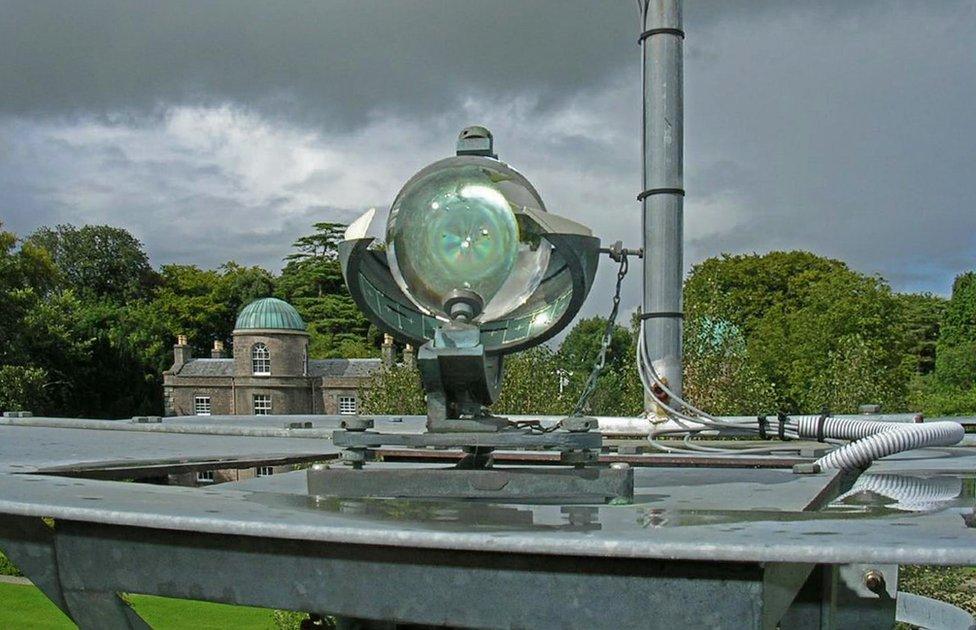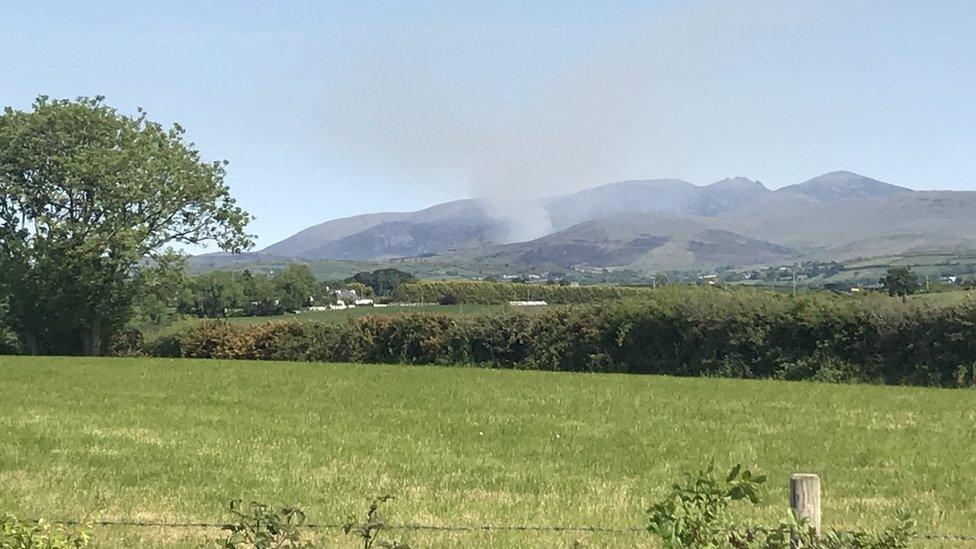Armagh Observatory says spring 2020 was 'sunniest on record'
- Published

Northern Ireland enjoyed a period of exceptionally dry, sunny weather this spring
If you thought the coronavirus lockdown coincided with some of the best weather in living memory in Northern Ireland, you were right.
Spring 2020 was the sunniest recorded by Armagh Observatory since it began monitoring sunshine 140 years ago.
It was also the driest spring that the historic County Armagh research institute has recorded in 150 years.

Northern Ireland's north coast bathed in sunshine last weekend
Its latest statistics cover the months of March, April and May, a period known as the meteorological spring, external.
A total of 567 hours of "strong sunshine" were recorded by the observatory from 1 March to 31 May.
The Armagh Observatory has been recording weather statistics since 1795 and began monitoring sunshine in 1880.
Its weather records stretch back much further than those used by the Met Office, which last week reported that the UK as whole experienced its sunniest spring since 1929.


Armagh Observatory has been monitoring weather in the Georgian city since 1795

Measuring sunshine might sound like the best job in the world - even something you might volunteer to do for free - but in reality it gets a little technical, so no loungers need apply.
"The instrument we use is a Campbell-Stokes sunshine recorder," said Prof Mark Bailey from the observatory.
"It's a large glass sphere which focuses the sunlight on a piece of impregnated card.
"If it's strong sunshine, the intensity of the sunlight burns through the card.
"The length of the burn on the card is then used to measure the number of hours of sunshine."


Campbell-Stokes sunshine recorder on top of the Armagh Observatory’s sunshine tower during summer 2005

Prof Mark Bailey is emeritus director of Armagh Observatory, and although it is closed to the public during lockdown, staff are still taking meteorological readings, as they have done for over two centuries.
Armagh Observatory's rainfall records date back to 1838, when it began taking daily measurements of precipitation.
This spring, it recorded just over three inches of rainfall (a total precipitation of 79.2 mm) between March and May.
Those three inches equated to 44% of average spring rainfall, when compared to the observatory's most recent 30-year average figure.
As for the temperatures, spring 2020 was warmer than average, but we did not see record-breaking figures in terms of heat.

The setting sun in Groomsport on the hottest day of the year
The average temperature was 9.67 Celsius - the tenth hottest spring recorded by Armagh Observatory and slightly colder than the "exceptionally warm" spring of 2017.
Of course, a long spell of dry, sunny weather can bring its own problems.
'Drought stress'
Just last week, Northern Ireland Water warned it might have to introduce a hosepipe ban because water levels in its reservoirs were running low.
The dry spell also fanned the flames of hundreds of wildfires, which led to an "exceptionally busy spring period" for the Northern Ireland Fire and Rescue Service.

The Mourne Mountains have been the scene of several wildfires this spring
A lack of rainfall also poses serious challenges for farmers.
County Down farmer Allan Chambers told Friday's News Letter, external that his winter crops were "in trouble".
"I'm farming now for almost 60 years, and this is the most extreme spring that I have ever seen", he said.
"The closest we came to the drought situation was back in 1976. This has been even more severe."
The Ulster Farmers' Union (UFU) has indicated there is a mixed picture for crop farms.
It said the west "has benefitted" from the warm spring weather after an extremely wet winter, while crops in some eastern areas "have suffered", particularly along the east coast.
"Winter barley and wheat is showing drought stress over gravel, sandy and shallow areas," said UFU seeds and cereals chairman, David Matthews.
"Any precipitation in the forecast will be very much welcome to aid grain fill over the coming weeks," he added.

This year's spring lambs have yet to experience proper Northern Ireland weather
If you've been praying for rain, the heavens have answered this weekend, with blustery showers and even hail falling in some areas on Friday evening.
Persistent showers, some of them heavy, were forecast overnight, especially in northern areas, and Saturday is expected to be a cloudy day with occasional rain.
So after a record-setting spring, it appears normal Northern Ireland summer service has resumed, for now at least.
- Published29 May 2020

- Published29 May 2020
